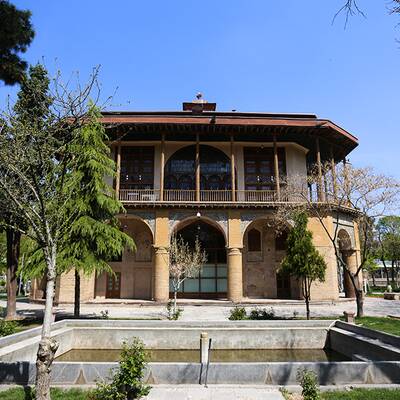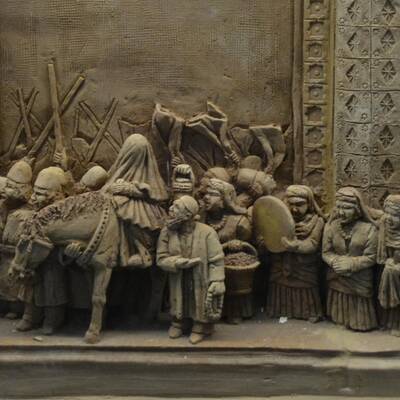Qajar Bath or Garmabeh is one of the most popular tourism destinations of Qazvin which attracts many tourists every year. It is one of the most beautiful baths of Iran that is currently served as the Ethnography Museum of Qazvin.
Located in one of the old districts of Qazvin namely Obayd Zakani. The construction of this bath backs to Safavid empire when Shah Abbas II ordered Amirguneh Khan Qajar to build this bath that was then named Hamam-e Shah, but since the founder of the building was a Qajar commander, its name was changed to Hamam-e Qajar. It was the most important bath of the city for many years being used by many people from different social classes. The bath was bought by the Cultural Heritage, Handicrafts and Tourism Organization in 1379 SH and inscribed on the list of Iran National Heritages, its restoration project began and transferred into the museum.
The bath has more than 1000 square meter built-up area in three main parts of Sarbineh (changing room), Miandar (a space between the cold temperature of outside and the hot air of inside of the bath considered for the body to be heated gradually) and hothouse (washing place) and Khazineh (the place of soak and massage). Men and women had separated parts in this bath. In order to enter the bath, you must pass first through a wooden door and then a spiral staircase to enter Sarbineh. This hexagonal space has a large pool in the center; probably the bursar of the bath sat in one of the angels to hold the customers’ belongings. Apart from the architecture, the ultramarine tile works and dome-like ceiling, one of the beauties of this bath is the life-size sculptures showing people washing and massaging that evoke the sense of past in the bathhouse.
in addition to the beautiful architecture and the complicated system of heating, baths in old Iran had a rich culture; the culture of bath included poems and proverbs, different jobs, special rituals that has been now forgotten. In fact, a bath was not only a washing place in old Iran, but also it was a part of public domain and a place for conversation and leisure time. The head of bath was called Hamami, responsible for the administration of the bath, who welcomed the guests and made bath a pleasant place for them. It is stated that Hamamies were commonly generous people who provided free services to the poor. Other jobs in the bath were Toontab (a person who heated and cleaned the bath), Dallak (a person who brushed people), Moshtmalchi (a person who massage people) and Pado (a person who ordered the shoes and gave the people a dry fabric or loincloth).
Visiting Qazvin bath provides also an opportunity to see the Ethnography Museum of Qazvin; where the tribal and cultural variety of this city is artistically exhibited. There are sculptures installed inside Sarbineh with local faces and cloths of Tat, Qazvini, Kord, Maraqei and Tork tribes, dancing and doing their traditional jobs like baking, waving carpets and agriculture, salesmanship, hanging grape with thread and producing raisin, bleeding, blacksmithing, grocery and writing prayer. A part of this museum is also dedicated to Qazvin rituals and customs like Tazieh, picking grape, festivities, wedding and mourning ceremonies.










